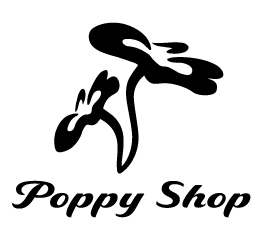Why Gauge is so Important in Crochet & Knitting
- Poppy Shop (Dana)

- Oct 20, 2018
- 3 min read
Updated: Dec 6

What is Gauge? Gauge is a measurement of the number of stitches and rows in a specific distance, typically over 4 inches (10 cm). It serves as a guide to ensure that your project turns out to the size intended by the pattern designer.
Why Does Gauge Matter? Checking your gauge is crucial, especially when making garments where fit is essential. If you skip this step, your project could end up too large or too small. By matching the gauge specified in the pattern, you’re more likely to get a finished piece with the right dimensions.
Factors Affecting Gauge:
Several factors can influence your gauge, including:
1) Hook or Needle Size
Hook and needle sizes can vary slightly between brands. For example, a 6mm hook from one brand may not be the same size as a 6mm hook from another. The pattern will recommend a hook or needle size, but this is a starting point. You may need to adjust your tool size to match the pattern’s gauge by making a swatch and altering your hook or needle size if needed.
2) Yarn Weight
Yarn labeled with the same weight (e.g., worsted weight # 4) can vary between brands or even within the same brand. This variation can affect your gauge, which is why it’s important to check your gauge before starting a project.
3) Your Personal Tension
Everyone has a unique knitting or crocheting style. Some work tightly, while others work more loosely. This can impact gauge even when using the same hook or needle and yarn as the pattern suggests.
How to Make a Gauge Swatch:
Most patterns will instruct you to make a gauge swatch in a specific stitch pattern and measure a 4-inch {10cm} area. To get the most accurate results, crochet or knit a swatch at least 6 x 6 inches {15 x 15cm} using the yarn and hook or needles you’ll use for the project.
After finishing your swatch, measure the center to check your gauge. Avoid measuring the edges, as these can be distorted. If your gauge doesn’t match the pattern, adjust your hook or needle size and swatch again until the gauge is correct.
How to Adjust Gauge
If your gauge swatch shows fewer stitches than required, your project will likely turn out too large. In this case, switch to a smaller hook or needle size and try again. If you have more stitches than required, your project will be too small, so you’ll need to use a larger hook or needle size.
Checking your Gauge:
Stitch Gauge
To check your stitch gauge, measure the number of stitches over 4 inches {10cm}. Place your ruler or measuring tape in the center of the swatch, aligning it with the beginning of the stitches. For example, if your pattern calls for 14 stitches over 4 inches {10cm}, count the number of stitches across your swatch to see if it matches.
Note: Do not measure from the edge of the swatch, measure in the middle.

.

Row Gauge
For row gauge, count the number of rows in 4 inches {10cm}. Like with stitch gauge, measure in the center of your swatch. If the pattern specifies 11 rows in 4 inches {10cm}, check if your swatch meets that requirement.
Note: Do not measure from the edge of the swatch, measure in the middle.

Gauge may seem like an extra step, but it’s essential for achieving the correct fit and size in your project. By taking the time to check and adjust your gauge, you’ll save yourself the frustration of ending up with a project that doesn’t fit or look as expected.
Love Your Gauge? Here’s How to Make It Work for You!
If your gauge doesn’t match the pattern’s recommended measurements right off the bat, don’t worry, it can actually be a good thing! Sometimes, the fabric and drape you create with your unique gauge may be exactly what you’re looking for. If you love the feel of your swatch, you can often adjust the pattern to fit your gauge. This might involve modifying stitch counts or altering the number of rows. If you’re unsure how to make those adjustments, check out one of the following blog posts for guidance on adapting any pattern to your own gauge:
